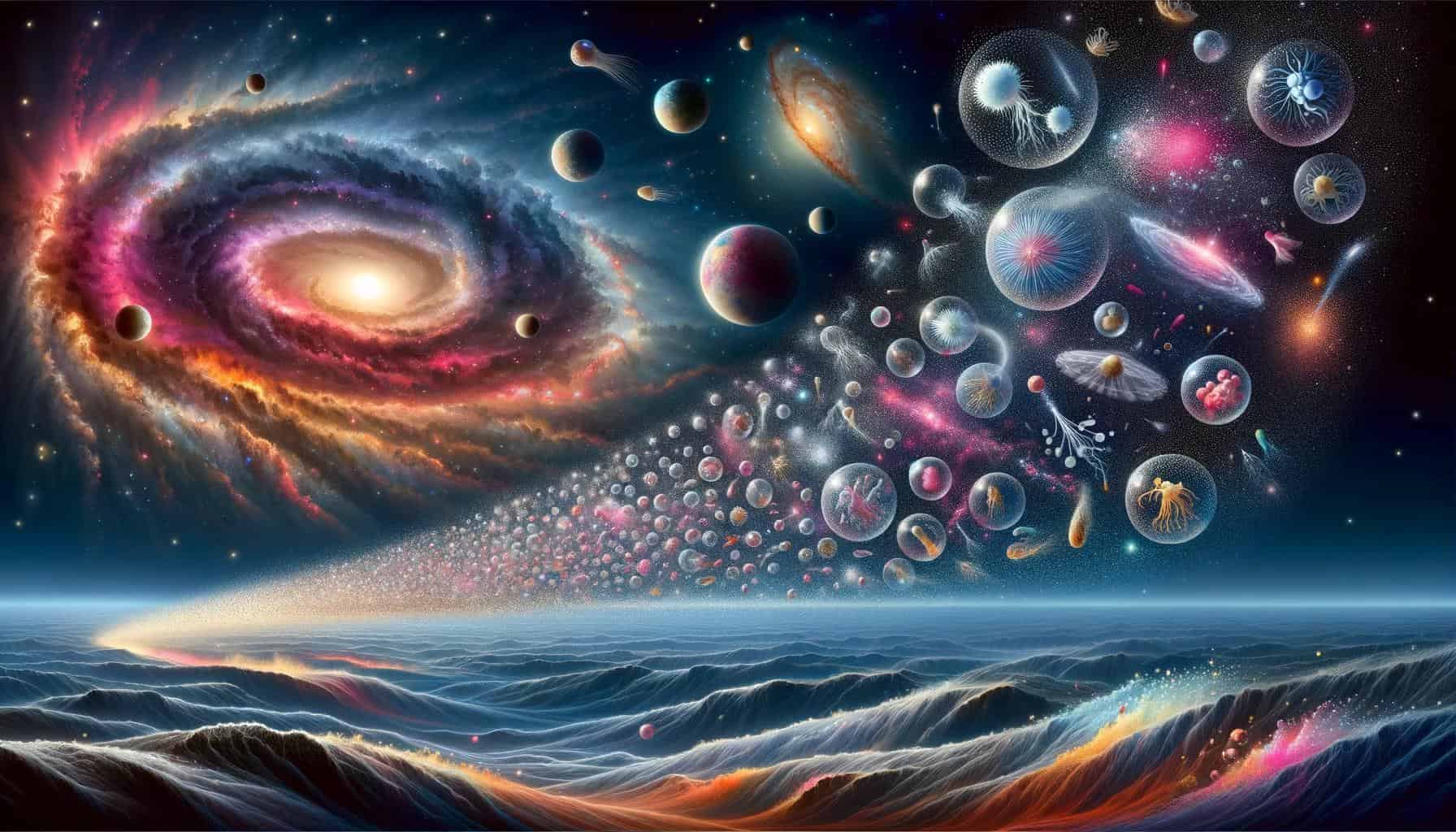
The origins of life remain one of the most intriguing mysteries. Recent research introduces a fascinating possibility: could cosmic dust act as a conduit for life, spreading it from one planet to another across the galaxy?
Cosmic Dust: Spreading Life’s Seeds
Earth’s history tells us a compelling story of life’s resilience and early emergence. Our planet, approximately 4.53 billion years old, shows signs of hosting simple life forms as early as 3.5 billion years ago. This timeline suggests life began shortly after Earth cooled enough to support it.
That’s great news I guess if you’re an Earthling but it also sounds a bit too convenient and maybe even too good to be true. It’s perhaps from this premise that some scientists are increasingly interested in the wild idea — that might not be that wild after all — that just maybe life didn’t appear on Earth in the first place. But how?
One hypothesis that has been gaining traction is panspermia. This captivating hypothesis suggests that life exists throughout the Universe, distributed by space dust, meteoroids, asteroids, comets, planetoids, or potentially by spacecraft in the form of unintended contamination by microorganisms.
The core idea behind panspermia is that life, or the precursor complex molecules necessary for life, can survive the harsh conditions of space and can be transported between planets, moons, or even star systems. This transportation could occur through natural celestial events, such as the impact of a comet or asteroid on a planet, which then ejects debris into space that could carry microorganisms to other celestial bodies.
In a new study, scientist Z.N. Osmanov from the Free University of Tbilisi proposes a plausible mechanism by which cosmic dust can become a carrier of life. These particles, once propelled by the radiation pressure of stars, could traverse interstellar space, potentially seeding life on new planets.
Across a galaxy
Here’s a how panspermia scenario could play out: high-altitude dust particles on an Earth-like planet with life collide with cosmic dust, gaining enough momentum to escape the planet’s gravitational pull. Once in space, these particles are pushed by stellar radiation, spreading potentially life-bearing dust throughout the cosmos.
This mechanism opens a new window into understanding how life can travel vast distances, although many challenges would remain such as radiation and the vacuum of space. Osmanov calculated that over billions of years, life-bearing dust could reach millions of star systems from the point of origin, filling the galaxy with the building blocks of life.
“In particular, it has been pointed out that, by means of the solar radiation pressure, small dust grains containing live organisms can travel to the nearest solar system, Alpha Centauri, in nine thousand years,” Osmanov wrote in preprint server arXiv.
Perhaps this is a good time to note that this is all just a hypothesis — and a highly speculative one to boot. But to some degree that can be said about all other theories attempting to explain the origin of life. However, it’s certainly one of the most interesting ideas out of the bunch. It challenges us to rethink the isolation of planetary systems and the possibility of life’s ubiquitous presence across the Milky Way.



